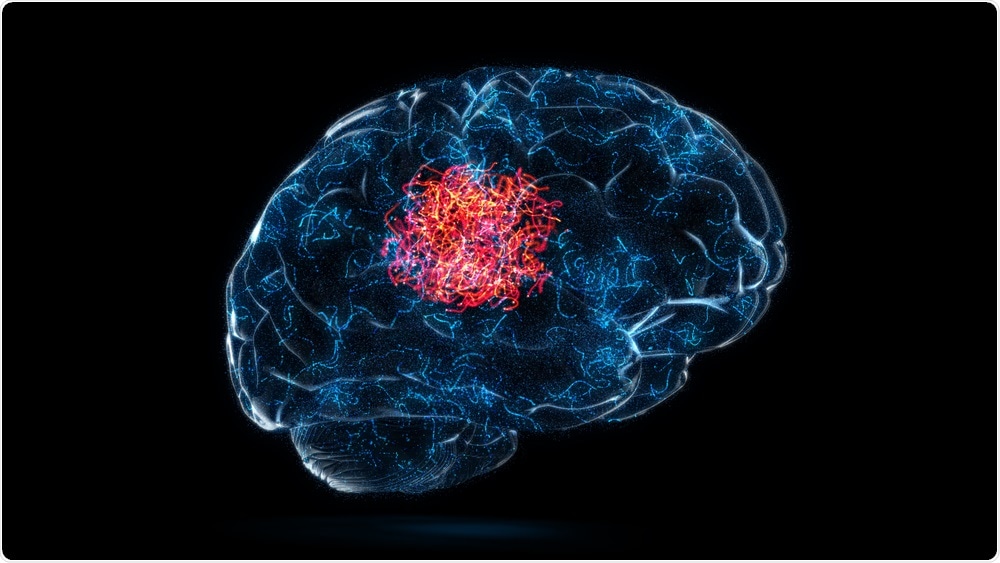A man who developed scoliosis as a teenager has developed ways to cope with chronic pain without using pain medication. Stirling Witt from Kansas City says that rather than taking the medication, he stretches, exercises, follows a healthy diet and focuses on staying positive.
 Untitled Title | Shutterstock
Untitled Title | Shutterstock
Witt found that in his teenage years and 20s, the chronic pain that he was in led to negative thoughts and depression, which only further exacerbated the pain.
Witt describes the pain he was in as a “low-grade kind of menacing pain that ran through my spine and mostly my lower back and my upper right shoulder blade and then even into my neck a little bit.”
Although the pain was difficult to live with, Witt found the sense of helplessness it led to was even more difficult to cope with. Struggling with back pain led him to feel depressed and like a social outcast.
I felt like I was being attacked by this invisible enemy. It was nothing that I asked for, and I didn't even know how to battle it."
At first, Witt decided to channel his emotions into music and paintings that would portray the pain, as a way to express and liberate himself. He found that absorbing himself in songwriting and painting enabled him to tune out the pain.
"When I'm making art and music, I feel less pain. While I'm doing those things, I'm so distracted from my pain that it's almost like I don't have it."
Scientists say Witt’s experience is a typical example of how sensations of pain can turn into something much more complex.
What connects pain and emotion?
Karen Davis from Krembil Brain Institute in Toronto says that essentially pain is just something that makes you say “ouch” and that everything else a person experiences is the outcome of the pain and how it affects emotions, feelings, and behavior.
The initial “ouch” response to pain occurs when nerve endings called nociceptors become activated, which triggers a cascade of signals that move through the nerves and into the spinal cord and brain. Once this happens, the situation becomes more complicated because the pain signals interact with various brain regions, including the ones involved in thinking and emotion.
"There's quite a pattern of activity that permeates through the brain that leads to all the complexities of what we feel associated with that initial hurt," says Davis.
Robyn Crook, a brain researcher at San Francisco State University, studies the evolution of pain and is currently comparing how the pain system works in mammals with how it works in squids and octopuses.
One of the questions she is trying to answer is why the brain links pain with emotion.
Crook says the most obvious purpose pain serves is the prevention or limitation of damage to the body. If you touch a hot stove, the pain will make you quickly move your hand away, but evolution did not stop there, she says.
"In some animals with more complex brains, there's also an emotional or a suffering component to the experience."
In dogs, for instance, pain seems to cause a similar level of distress to that seen in humans and one reason for this could involve memory:
Having that emotional component linked to the sensory experience really is a great enhancer of memory. And so humans, for example, can remember a single painful experience sometimes for their entire lives."
In the case of the stove example, this would mean a person never touched the hot stove again.
‘Pain processing’ regions of the brain
Another reason that higher order animals have brains that link pain and emotion may be empathy, suggests Crook. When a person experiences pain, they develop empathy for other members of their social circle or family who experience pain and then try to offer help.
Beth Darnell, a psychologist at Stanford University, says that although this emotional response to pain and empathy for others is beneficial, pain can also be destructive.
Mental health disorders, for example, amplify pain: “They engage regions of the brain that associate with pain processing. And they can also facilitate rumination and fearful focus on the pain."
When the pain persists, it can eventually cause changes in the brain and pain signaling that no longer provides any benefit. Instead, the signaling can lead to depression, anxiety and stress… like Witt experienced.
Darnall says it can be possible to break this cycle. Patients can learn to gain control over the pain signaling, by slowing their breathing and relaxing their muscles, for example. A state of relaxation can serve as an antidote to the pain responses that the experience of pain triggers.
‘There’s hope’
In some cases, such techniques can serve as an alternative to taking pain medication and for patients who do rely on these drugs, psychological therapy can help the medications work more effectively.
However, patients are not generally offered psychological therapy, says Darnell, who believes that too much emphasis has been placed on treating pain as a biomedical problem that requires pharmaceutical intervention.
Witt, now 40 years of age and making a living from art and music, says he no longer paints or writes songs about pain, nor does he take pain medication. He stretches and exercises instead and also follows a healthy diet and tries to stay optimistic.
I'm actually not convinced that I have to live with this for the rest of my life. I very well may. But at the same time, I live in that state of mind all the time that there's hope."
Source:
The original interview, which was conducted by Jon Hamilton for WESM 91.3 FM can be found here.